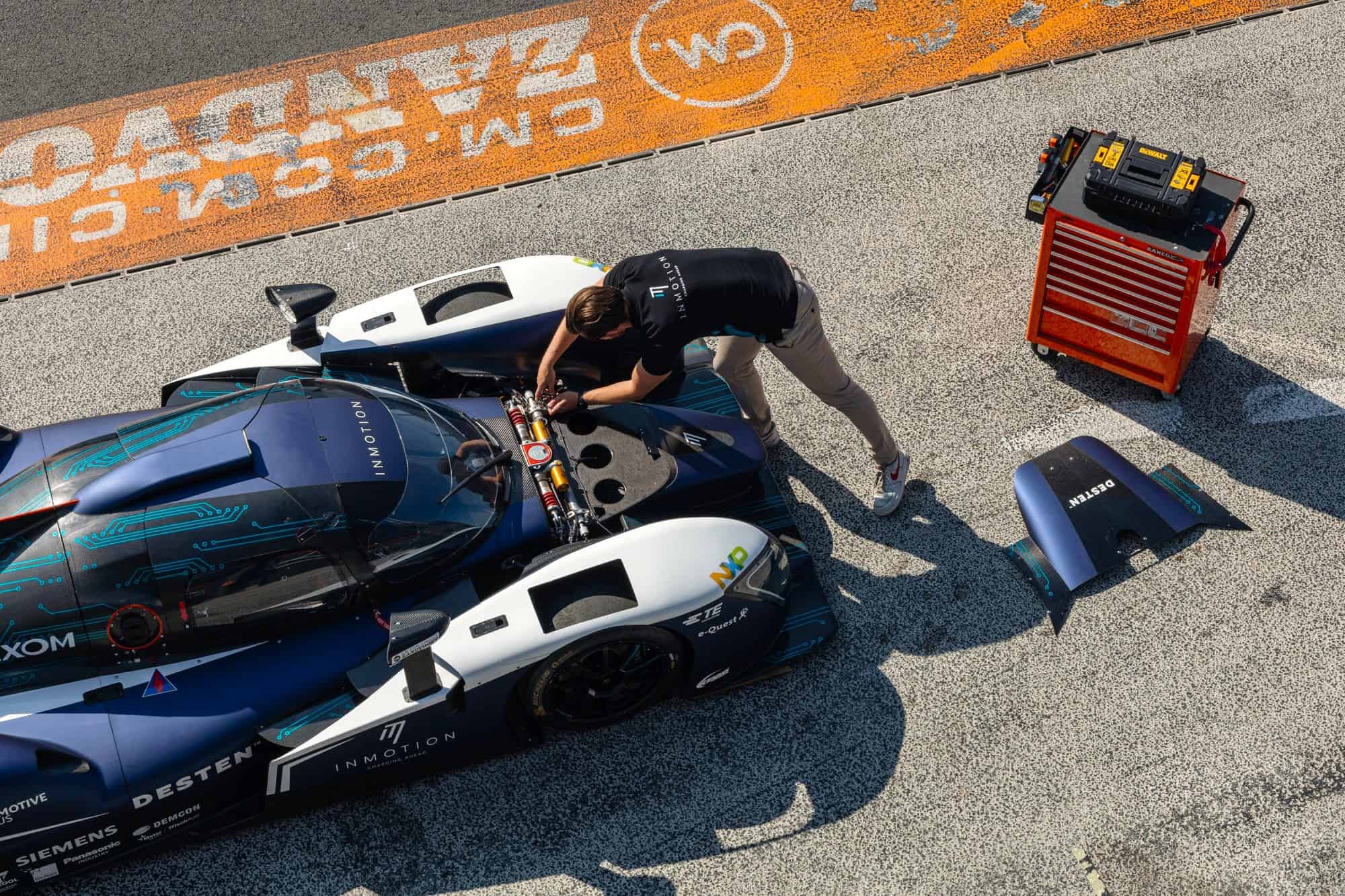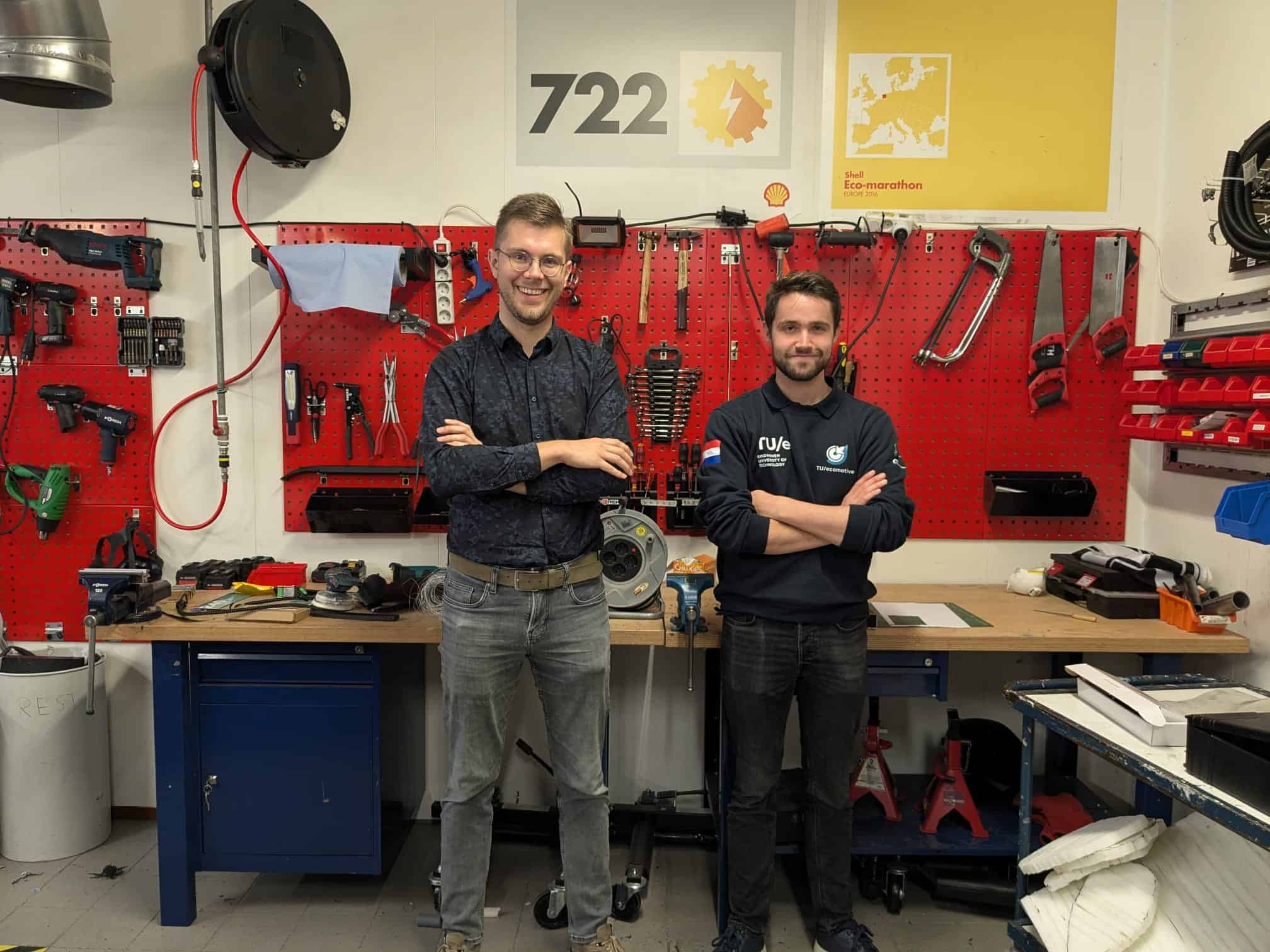
From safety belts to windscreen wipers and from disc brakes to slicks, Le Mans’ 24 Hours has brought a lot of innovation. However, never before has a fully electric car completed the 24 hours. According to the InMotion student team, this must change, which is why they presented their prototype today, which is due to take part in the ultimate stress test for cars in 2023.
In order to be able to participate in 2023, InMotion wants to be able to charge an electric car as quickly as it takes to refuel a standard car. With ambassadors like Jan Lammers and several lap records to their name, the student team has already shown that they can achieve a lot, but in the coming years, they will set the bar even higher. The former team manager of the student team of Eindhoven University of Technology, Teun van Beurden, tells more about the team’s plans. “As a team, we have of course already built some cars in recent years, and we have learned a lot from them. In the past year, we have looked at this carefully and asked ourselves: ‘What is the way to go for us to achieve Le Mans?’ We are going to focus purely and exclusively on fast charging technology because we think this is the last step to make electric driving a feasible solution.”
“Basically, we want to ensure that charging a car can be as quick as refuelling a car,” continues Van Beurden. “What happens this way, is that you counteract and undermine the argument that people always cite as ‘then you have to charge your car’, or ‘you cannot drive far enough’, you offer a solution to the problem that people see every day. This way, we see a very bright future for electric driving.”
However, before that happens, a big challenge awaits the team: shortening the charging time of the car. The fast charging of a current car, where the battery is charged to 80%, happens in at least twenty minutes. InMotion thinks that within five years it can be reduced to just two minutes. “The reason we think we can do this is that we will focus entirely on this in the coming years. We want to make a development in the battery pack and how much energy you can get from it. Cooling will be an essential part of this. You have to make sure that everything stays at the right temperature and there is still a lot to gain there.” In the summer of 2019, the team wants to have its first working prototype, which can be charged in ten minutes.
If the team succeeds in successfully developing this technology before 2023, they will be sitting on a gold mine. Manufacturers will probably be eager to implement this. However, is it allowed just like that? “That will depend on the partnerships that we will enter into with companies in the coming years. These companies are also aware that if this succeeds, it will become a potent technique, which everyone wants. An agreement could be that a company will become a co-owner of the technology. We do not yet know who our big sponsors are at that moment, that also depends on the growth of the team. We have now grown regarding the number of students, but we want to work with ever larger sponsors and investments so that we can ensure that we go to LeMans.”
The car that the team presents today is of course very different from a car for daily use: “The reason we want to drive Le Mans is because we as a team are convinced and what also appears from history, that the conditions you have in motor racing are so extreme that the solutions that come from them can later often be found in the regular car industry. We want to be a source of inspiration for car manufacturers and show them what we can do so that this technology will be reflected in regular cars.”
Another reason to participate in the Le Mans 24 Hours is that there are few race classes where you can drive a car that does not meet certain standards. The Garage 56 class was created in 2012 to stimulate innovation and give a podium at one of the most significant events in motorsport. “We have to be able to keep up with the speed of the other cars, so we need to reach speeds of 300 to 350 km/h. If we are there in 2023, there is an excellent chance that we have designed the fastest electric car in the world. It is a great ambition for the engineers to be able to create something unique like this.”
Header photo & photo at the bottom: © Gerlach Delissen Photography
The photo in the article: © Johan van Uden








